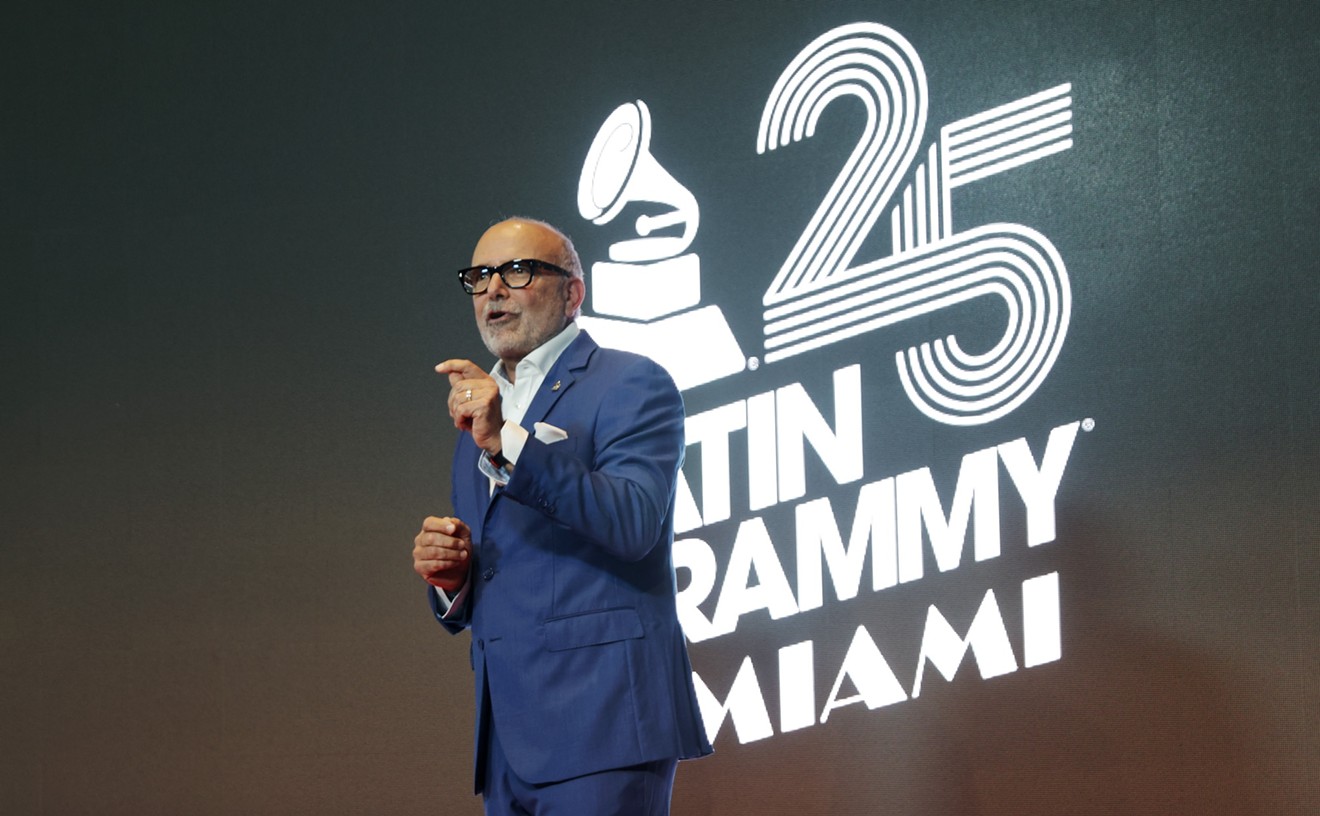The good news is that Kenny Loggins is not reaping a financial bonanza from Schlock Jock Rock royalties. We know you were worried about that.
Loggins, of course, was once the supremely untalented half of the duo Loggins and Messina who went on to find success in the Eighties as a solo performer with a string of vapid, radio-ready hits like "Footloose" and "Danger Zone." Gangly, tone deaf, and downright ugly, Loggins was actually one of the music industry's top sellers in the Reagan era, epitomizing the sheer awfulness of pop during that dark period.
And now, for some reason, arena and stadium types love Loggins's songs, blaring his material constantly at sporting events. As a result his forgettable tunes have taken on a new life, receiving far more attention than they deserve.
That's Schlock Jock Rock for you.
Schlock Jock Rock -- SJR for short -- is that music pumped over loudspeakers at sporting events, before the game starts. And in timeouts. Even during the games, when snippets are inserted, maybe only five seconds worth, which is still long enough to at least hint at the awfulness.
As a genre, SJR offers a reflection, albeit distorted, of the current state of popular music in American society. Songs are selected for their immediate impact, pared down to their essentials, and recycled for generic use by the masses. Quality and artistic merit are relegated to the bench. Not unlike classic-rock radio, SJR is a weird musical universe where hacks and has-beens like Loggins, Huey Lewis, and Quiet Riot share equal billing and glory with legends such as the Beatles, Bob Seger, and Creedence Clearwater Revival.
But we're getting off course. Our first and foremost concern is royalties. How much dough could Loggins be raking in if he's entitled to even one dime every time "Footloose" gets played over a PA system? Our cultural hackles rise at the thought.
Jonathan Love of ASCAP, an organization that, along with its competitor BMI, collects and dispenses royalties, puts our initial fears to rest, explaining that stadiums and arenas simply make an annual lump-sum payment for the right to include songs on their playlists. Divided among several hundred artists, such royalties quickly evaporate before reaching the bank accounts of performers like Loggins.
But that leaves us with other nagging questions: What the hell is SJR anyway, and where did it come from? Who decides what gets played at sporting events? Is there a sinister plot among frustrated would-be radio programmers to foist songs like "Whoomp (There It Is)" on an unsuspecting public?
Kyle Ritchie is the director of scoreboard operations at Joe Robbie Stadium. Affable, enthusiastic, and clearly in love with his job, Ritchie has complete control over the sound system at JRS during Dolphins games, and shares responsibilities with another "producer" during Marlins outings.
According to Ritchie, SJR (or "crowd motivational music," as he calls it) is a relatively recent phenomenon. While sports and music have long been associated with each other (remember the Pittsburgh Pirates and "We Are Family" back in the Seventies?), the reach and power of SJR wasn't fully realized until 1986 when, according to Ritchie, the New York Mets adopted Queen's "We Are the Champions" as their standard on the way to an eventual World Series.
"The Mets were really big on that song, and they brought it into the forefront," Ritchie says. The rhythmic thumps and handclaps that open the tune proved irresistible, while Freddy Mercury's plaintive lyrics cut across demographic lines and touched a nerve in the hearts of even the most hardened Mets fans. In music-industry speak, "We Are the Champions" created a buzz.
To his eternal credit, Ritchie refuses to play the song. "It's become hackneyed and overused," he says. "For better or worse, it's become the quintessential 'win the world championship' song. Of course, I've never had the luxury of playing it, even if I would do that."
Ritchie, a former DJ who joined JRS a couple of years ago, says the business has changed much since he started out with the Baltimore Orioles in 1987. Computer technology revolutionized Schlock Jock Rock, giving people like Ritchie more tools with which to manipulate a crowd. For example, a digital cart machine has become the industry standard for delivering what Ritchie calls "stingers," those short, between-play snippets that are intended to help the crowd interpret what just happened on the field. So after a good play, Ritchie, who selects the songs that get carted, can simply yell "number fourteen" to his assistant, and 80,000 fans will be treated to a stirring three-second refrain from KC and the Sunshine Band's "That's the Way I Like It."
According to Ritchie, there are differences between the types of music you'll hear during various sports. "If you go to a basketball game, you're going to hear nothing more than Top 40 dance-type music, and some old classic rock, but that's about it," he says. "You go to a baseball game, you're going to hear a little country, a little soft rock, and a little Motown. You're going to hear a little bit of everything." Part of the disparity can be ascribed to the indoor arena versus outdoor stadium acoustics, with cultural vagaries playing some role as well.
Recognizing the importance of SJR, the professional leagues are muscling into the act. The NFL, for example, produces a library of tunes it strongly suggests its teams use.
Talk about the No Fun League. Comprising 82 songs (edited down to time-out friendly lengths of no more than two minutes) and twenty "stingers," the library includes such gems as Hammer's witty line "Hammer Time" (two seconds), Bachman Turner Overdrive's epic-by-comparison "Takin' Care of Business" (which clocks in at 55 seconds), and Huey Lewis's "I Wanna New Drug" (thankfully shortened to one minute).
We understand that the purpose of SJR is not to educate, but to entertain. Still, couldn't they slip in some Liz Phair, Lou Reed, or Frank Zappa? How about a few "spoken word" excerpts from Henry Rollins? Why not support struggling local bands and play Natural Causes's "Bomb in the Shelter" when Dan Marino hooks up with Irving Fryar? (Calls to NFL headquarters were futile A a league official denied even knowing about the existence of a music library.)
Luckily for purists, there are still pockets of resistance. Chicago's Wrigley Field for example, home of the Cubs, where a controversy erupted a few years ago when they put in lights, for chrissake. There, an organist still rules, belting out acceptable ballpark ditties like "Take Me Out to the Ball Game" and "La Bamba" (a song we think should only be heard through a Hammond). And closer to home, JRS employs a full-time organist for baseball games, a move we applaud even if the guy does have to share time with Gloria Estefan stingers. It's Ritchie who co-ordinates the SJR inserts with the organ tunes so neither gets stepped on. (Although a few blasts from the live keyboards couldn't hurt some of the SJR cart songs.)
Organists' intrusions aside, the handwriting is on the outfield wall. SJR is here to stay, and with the re-emergence of New Kids on the Block as a force in popular culture, the future looks bleak.
Speaking of the future, Ritchie says the next big stadium song will be Gary Glitter's "Rock and Roll Part Two." Penned in the Seventies, the song first broke the SJR charts a few years ago via a minor-league hockey team in the Northwest. Soon, it will be everywhere.
"That's replaced 'We Are the Champions' as the quintessential get 'em going song," Ritchie says. "I defy you to go to a stadium and not hear that song at least once at some point in the game. That's the big one now."
As hard as it may be to believe, Gary Glitter and his song were actually discussed at a conference Ritchie attended earlier this year out in Salt Lake City. Attended by 175 or so stadium, arena, casino, and convention center personnel, the IDEA (short for Information Display and Entertainment Association) conference has an impact on the cultural landscape that is nearly impossible to quantify: once-stagnant singing careers may be revived, ill-advised reunion tours by long-forgotten groups may be launched, and every day millions of office workers will absent-mindedly hum cheesy melodies at water coolers around the nation.
It could be worse. If not for the surprisingly socialistic arrangement mandated by ASCAP and BMI, Kenny Loggins could be rolling in the dough.










